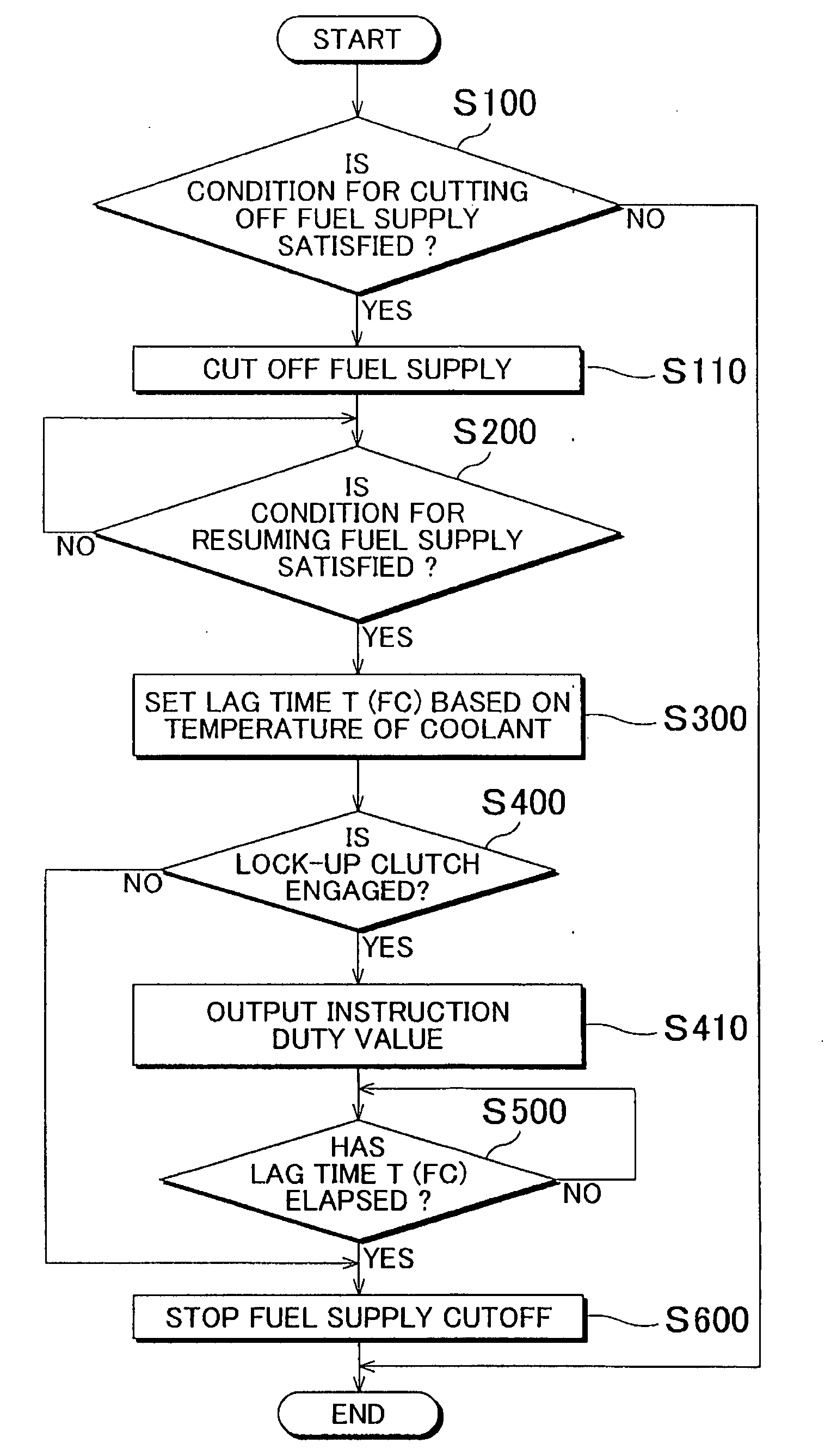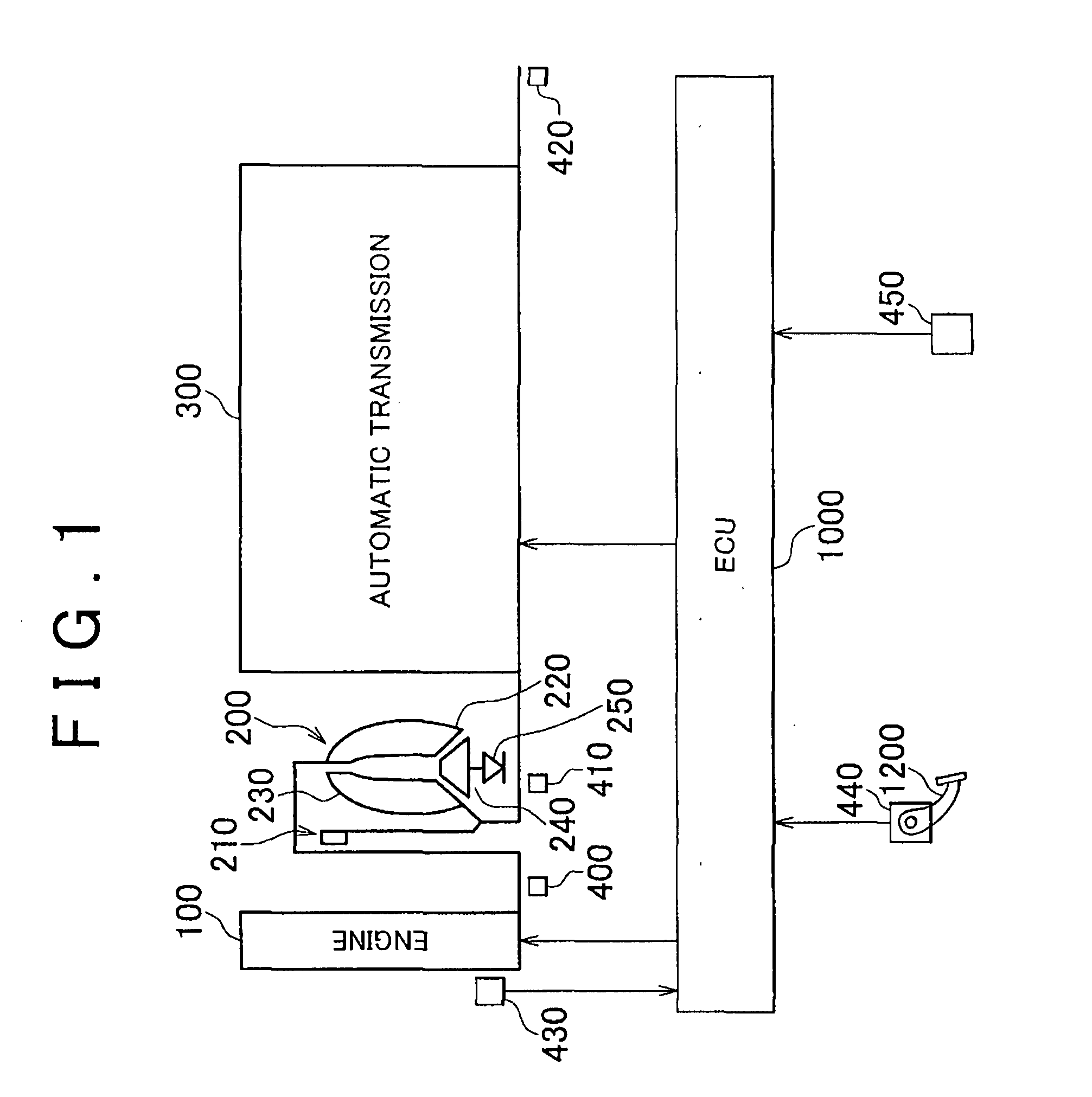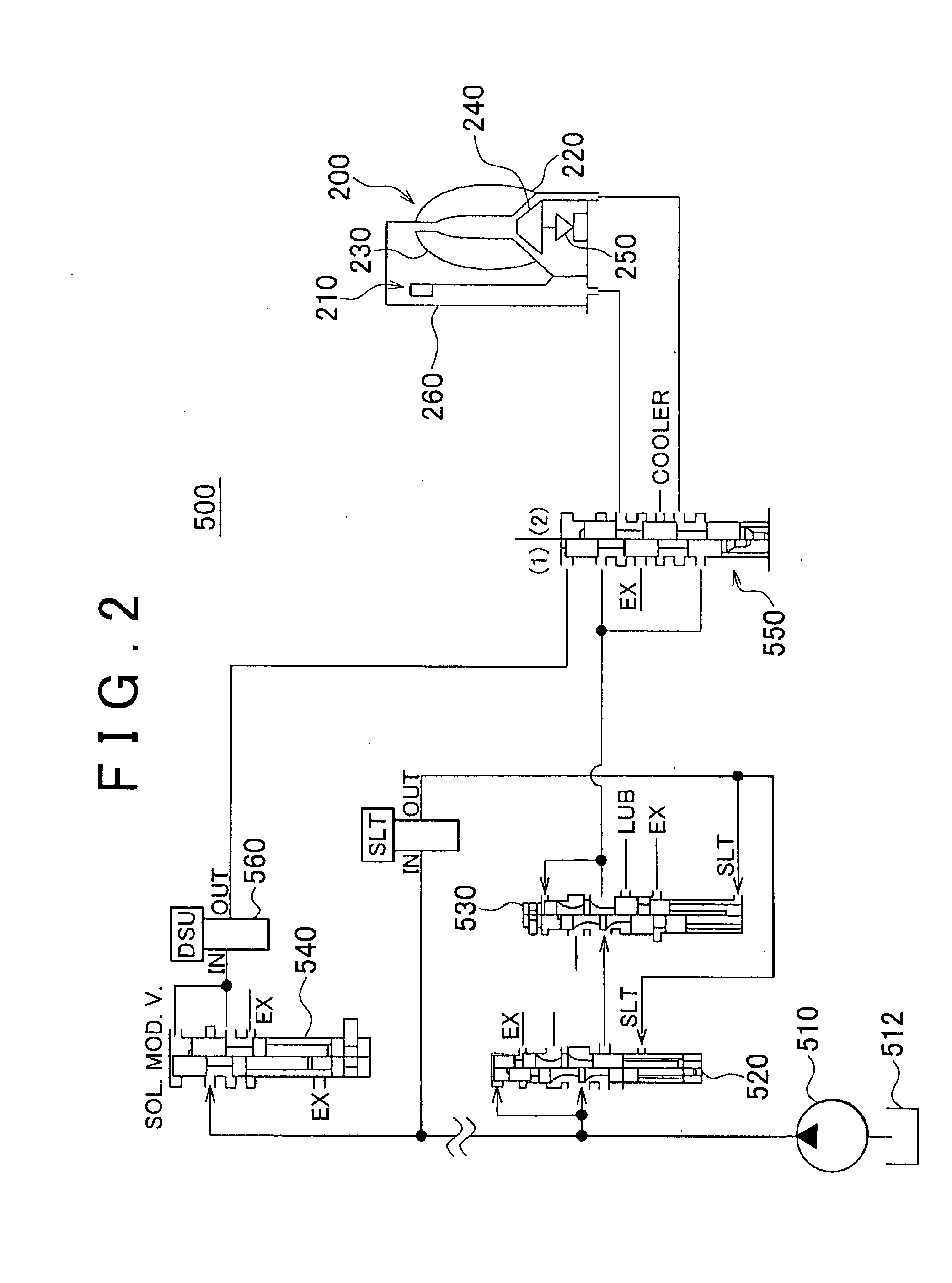Powertrain control apparatus and method
a technology of powertrain and control apparatus, which is applied in the direction of electric control, gearing, instruments, etc., can solve the problems of long time until the engine speed starts increasing, low fuel combustibility, and lag between, and achieve the effect of suppressing a shock and suppressing an engine stall
- Summary
- Abstract
- Description
- Claims
- Application Information
AI Technical Summary
Benefits of technology
Problems solved by technology
Method used
Image
Examples
Embodiment Construction
[0029]Hereinafter, embodiments of the invention will be described in detail with reference to the drawings. In the following description, the same components are denoted by the same reference numerals, and have the same names and the same functions. Therefore, redundant description thereof will be omitted.
[0030]The powertrain of a vehicle in which a control apparatus according to a first embodiment of the invention is provided will be described with reference to FIG I. The control apparatus according to the embodiment may be realized, for example, when an ECU (electronic control unit) 1000 shown in FIG. 1 executes programs.
[0031]As shown in FIG. 1, the powertrain of the vehicle includes an engine 100, a torque converter 200, an automatic transmission 300, and an ECU 1000.
[0032]The output shaft of the engine 100 is connected to the input shaft of the torque converter 200. That is, the engine 100 is connected to the torque convert 200 by the rotational shafts. Accordingly, the rotatio...
PUM
 Login to View More
Login to View More Abstract
Description
Claims
Application Information
 Login to View More
Login to View More - R&D
- Intellectual Property
- Life Sciences
- Materials
- Tech Scout
- Unparalleled Data Quality
- Higher Quality Content
- 60% Fewer Hallucinations
Browse by: Latest US Patents, China's latest patents, Technical Efficacy Thesaurus, Application Domain, Technology Topic, Popular Technical Reports.
© 2025 PatSnap. All rights reserved.Legal|Privacy policy|Modern Slavery Act Transparency Statement|Sitemap|About US| Contact US: help@patsnap.com



